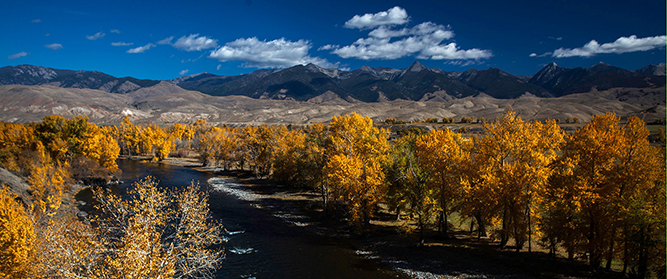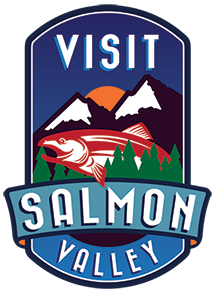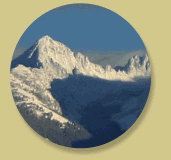|
Click here to see photo credits.
...Mountains and Lakes
Mountains and
Lakes
Situated at the base of the Continental Divide, in the Northern Rocky Mountains, Salmon, Idaho is within easy reach of several major peaks, many over 10,000 feet, and an ideal base for a backcountry adventure.
Ajax, Copperhead, Freeman (that's the peak in the photo), Monument, and Sacajawea Peaks of the Beaverhead Mountains in the Bitterroot Range of the Continental Divide form the eastern border between Idaho and Montana. The Lemhi Mountains rise between the Lemhi and Salmon Rivers, and the Salmon River Mountains flank the Salmon River to the West. Most prominent in the Salmon River Range are the Bighorn Crags, located in the Frank Church River of No Return Wilderness.
Lemhi Pass, southeast of Salmon, at the top of Agency Creek is part of the Lewis & Clark Back Country Byway. At 7,323 feet this historical pass is the site where, in 1805, the Lewis and Clark Corps of Discovery expedition first saw the headwaters of the Columbia River. Open from June to early fall to motorists it is a favorite for the snowmobilers in the winter on the groomed trails.
Lost Trail Pass located on Highway 93, 45 miles north of Salmon, is open year round and provides panoramic views of the area at 7,014 feet, and the best access to all forms of winter recreation. The Lost Trail Ski area offers several ski lifts to over to a multitude superb ski trails
Gilmore Summit located 35 miles south of Salmon on Highway 28 is the easiest of the passes into the Salmon Valley. Take a side trip and have a picnic at Meadow Lake or visit the old ghost town of Gilmore.
Bannock Pass is located south of Salmon and crosses the Continental Divide to connect with I-15 near Dillon, Montana. Pack a picnic and stop at Clark Canyon Reservoir and Dam and enjoy fishing or playing in the water.
fisherman.
Mountain lakes abound in the Salmon area. The most accessible is Williams Lake, only 10 miles from Salmon, complete with campground and boat ramp.
Iron Lake is accessible by road (four wheel drive is recommended) and is well worth a day trip or longer.
The Bighorn crags are riddled with high Alpine lakes, filled with fish mostly accessible by foot or horseback, as are many others in the area.















